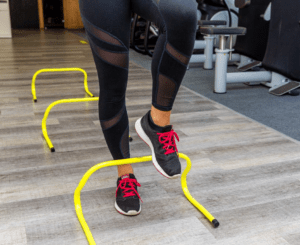Back pain can be hugely debilitating for people and there are a lot of myths about back pain and so we wanted to share with you 10 things you need to know:
1. Your back is stronger than you think
The spine is a strong, stable structure and not easily damaged so in most instances it is a simple sprain or strain. In these cases, 98% of people, according to research, will recover reasonably quickly, and many do so without treatment. Some people experience repeat episodes, which can be distressing, but again these are rarely dangerous.
2. You rarely need a scan and it can do more harm than good
This is because seeing perfectly normal changes to a spine on a scan can cause people to avoid the activities they should be doing, such as exercise and movement. In very rare cases, there may be something more serious that requires medical advice. However, these account for just 2% of cases, so if your physio or GP does not send you for a scan, you should take it as a good sign that there is nothing concerning going on.
3. Avoid bed rest, stay in work and gradually resume normal activities
Studies now indicate prolonged rest and avoidance of activity for people with low back pain actually leads to higher levels of pain, greater disability, poorer recovery and longer absence from work. In the first few days of a new episode of low back pain, avoiding aggravating activities may help to relieve pain. However, staying as active as possible and returning to all usual activities gradually is actually important in aiding recovery – this includes staying in work where possible.
4. You should not fear bending or lifting
Bending and lifting are often portrayed as causes of back pain and while an injury can occur if something is picked up in an awkward or unaccustomed way, it’s most likely to just be a sprain or strain. The important thing is to practice and get your body used to carrying different loads and weights in a way we find comfortable and efficient.
5. Exercise and activity reduce and prevent back pain
Exercise is shown to be very helpful for tackling back pain and is also the most effective strategy to prevent future episodes. Start slowly and build up both the amount and intensity. No one type of exercise is more effective than others so pick an exercise you enjoy, that you can maintain in the long-term and that fits your schedule.
6. Painkillers will not speed up your recovery
There is no strong evidence on the benefits of painkillers and they do not speed up recovery. As a result, they should only be used in conjunction with other measures, such as exercise, and even then just as a short-term option as they can bring side effects. Exercise, which is safer and cheaper, is considered the preferred option.
7. Surgery is rarely needed for back pain
There are some uncommon back conditions where there is pressure on the nerves that supply the legs and you get leg symptoms, such as pain, pins and needles or numbness. For these conditions, surgery can help the leg symptoms but it is important to understand that it is not always required. You also need to know that on average, the results for back surgery are no better in the medium and long term than non-surgical interventions, such as exercise. So a non-surgical option, which includes exercise and activity, should always come first.
8. Get good quality sleep
The importance of sleep in tackling all pain, including back pain has become increasingly clear in recent years. This is because good sleep reduces stress and improves your overall feeling of well being, making you less susceptible to the triggers of pain in the first instance and helping you to cope when it does occur. Aim for 7.5-8 hours a night and try to aim for a regular routine, as far as possible. It is also very important to know that there is no best position or type of mattress – whatever feels most comfortable for you is best.
9. You can have back pain without any damage or injury
Many physical or psychological factors can cause back pain and often a combination of these are involved. Crucially, it’s important to know that all pain is 100% real and never ‘all in your head’, even when factors like stress or mood are involved.
However, each of the example factors below can turn up the volume on your pain and gaining a greater understanding of when that can happen puts you in a stronger position to recognise them and learn how to turn down the dial again:
- Physical factors, such as ‘protecting’ the back and avoiding movements, or a simple strain.
- Psychological factors, including a fear of damage or not getting better, feeling down or being stressed.
- More general health and lifestyle factors, like being tired and rundown, not getting enough good quality sleep, being overweight or not getting enough physical activity
- Social triggers, such as difficult relationships at work or home, low job satisfaction or stressful life events, like a family death or illness.
10. If it doesn’t clear up, seek help but don’t worry
If your back pain does not clear up after 6 – 8 weeks, make an appointment to see your GP or physiotherapist. Physiotherapists provide expert advice, guidance and treatment for back pain. This assistance will help to reduce your chances of future episodes, while improving your overall health and well being. The serious but very rare symptoms that we do want people to be aware of and you should contact a doctor if you experience any of them are:
- Difficulty passing urine or having the sensation to pass water that is not there
- Numbness/tingling in your genitals or buttocks area
- Loss of bladder or bowel control
- Impaired sexual function, such as loss of sensation during intercourse
- Loss of power in your legs
- Feeling unwell with your back pain, such as a fever or significant sweating that wakes you from sleep



